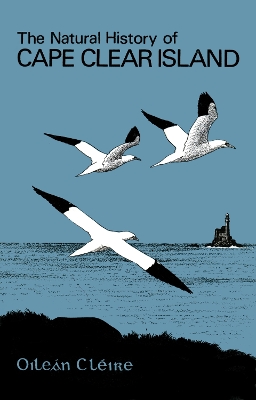Poyser Monographs
5 total works
The 83 species featured in this book, in date sequence of discovery, had not been recorded in Britain or Ireland before 1946. The original accounts of the sightings published in issues of British Birds* between 1947 and 1982 are now reprinted and supplemented with comment by Dr Sharrock on subsequent occurrences and current status. In addition, Peter Grant provides identification notes drawing attention to points not covered in the original accounts. There is also a world distribution map for each species and a line illustration to head each of the accounts. At the end of the book a section of plates reproduces 81 'first-sighting' photographs covering 32 of the species in the book.
Cape Clear Island, the most southerly point of Ireland apart from the nearby Fastnet Rock, has been the site of a bird observatary since 1959. This account of the island, its flora and fauna, its inhabitants and history, is weighted in favour of the birds but this is, perhaps, inevitable since the island offers so much of exceptional ornithological interest. Even so, a glance at the book's contents will show the wide range covered - from Killer Whales to the rare Kerry Slug and the Lusitanian flora that south-west Ireland shares with Iberia. Anyone with a general interest in natural history will find chapters an a variety of topics, each written by an acknowledged expert. The authors' enthusiasm for their subjects is always apparent; some sections are light-hearted but scientific accuracy is always maintained.
For the bird-watcher the book, like the island, is rich in fascinating material - not least the detailed list of species (accampanied by many maps and a unique set of more than 130 histograms), sections on sea-watching and seabird studies, and an account of the ornithological year.
The observatory has made important contributions to migration studies and, although it is perhaps best known as a vantage point for the study of some of Europe's largest sea bird movements, the island also receives many rarities and vagrants, from Asia and America as well as Europe. To whet the reader's appetite, Robert Gillmor's characteristically evocative pen-and-ink illustrations are liberally mingled with the text.
Those who already know the island's varied charms will have memories reawakened by this eminently readable book - those who have yet to visit this unique yet accessible place will surely be enticed to do so.
For the bird-watcher the book, like the island, is rich in fascinating material - not least the detailed list of species (accampanied by many maps and a unique set of more than 130 histograms), sections on sea-watching and seabird studies, and an account of the ornithological year.
The observatory has made important contributions to migration studies and, although it is perhaps best known as a vantage point for the study of some of Europe's largest sea bird movements, the island also receives many rarities and vagrants, from Asia and America as well as Europe. To whet the reader's appetite, Robert Gillmor's characteristically evocative pen-and-ink illustrations are liberally mingled with the text.
Those who already know the island's varied charms will have memories reawakened by this eminently readable book - those who have yet to visit this unique yet accessible place will surely be enticed to do so.
The Atlas plots the results of the survey organised by the BTO and the IWC during the yeats 1968-72. Over 250 maps show the distribution of 218 species.
Dr J. T. R. Sharrock is uniquely placed to write about the rare birds of Britain and Ireland. He is a member of all three bodies which adjudicate on such records - honorary secretary of the British Ornithologists' Union's Records Committee and a member of both the British Birds Rarities Committee and the Irish Records Panel. He is already the author of a companion book which deals with a selection of the commoner rarities, Scarce Migrant Birds in Britain and Ireland (see back of this jacket for details). In this new, much fuller book the enormous task of collation of over 8000 records and their visual display as maps and histograms was carried out by Mrs E. M. Sharrock. The textual and visual analysis deals with 221 different species. Between them, the authors present a complete picture of rare birds in Britain and Ireland: * HOW MANY are seen? * WHEN do they occur? * HOW regularly do they come? * WHERE are they seen? There are line drawings of all 221 species by well-known bird artists: Robert Gillmor, P. J. Grant, R. A. Richardson, D. I. M. Wallace and lan Willis. Jacket design by Robert Gillmor
SCARCE MIGRANT BIRDS IN BRITAIN AND IRELAND * HOW MANY are seen? * HOW REGULARLY do they come? * WHERE do they occur? * WHEN are they likely to be spotted? The above questions are authoritatively answered by the author, Dr J. T. R. Sharrock, honorary secretary of the British Ornithologists' Union's Record Committee and of the Rare Breeding Birds Panel, joint convenor of the European Ornithological Atlas Committee, and a member of the British Birds Rarities Committee and of the Irish Records Panel. Dr Sharrock takes a ten-year period and investigates in detail all the records of a selection of birds which occur here as scarce migrants - birds from Europe, from Asia and from America. He considers their breeding and wintering ranges, and the patterns of their records in Britain and Ireland, and tries to determine, also ...* WHY do they visit us at all? Jacket design by Robert Gillmor

